- Author: Kathy Keatley Garvey
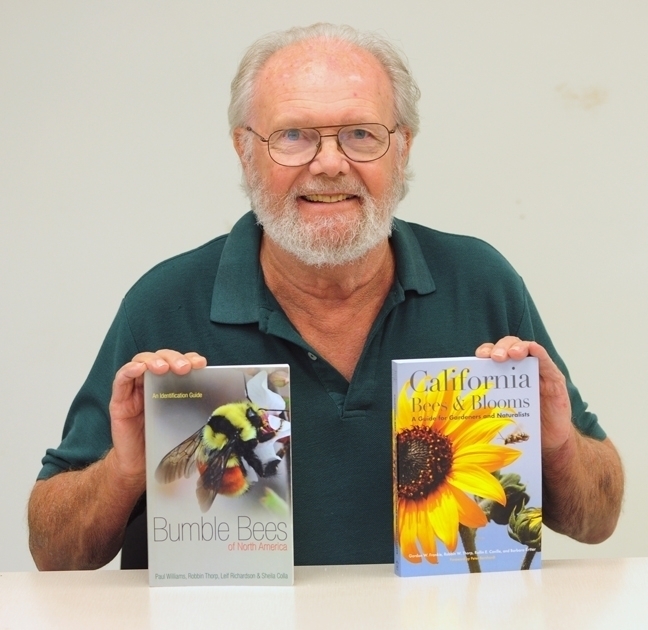
Well, weather permitting, you can begin searching for the first bumble bee of the year in the two-county area of Yolo and Solano. If you photograph it and you are judged the winner, a prize awaits you--in addition to bragging rights.
The third annual Robbin Thorp Memorial First-Bumble Bee-of-the-Year Contest will begin at 12:01, Jan. 1. The first person to photograph a bumble bee in the two-county area and email it to the sponsor, the Bohart Museum of Entomology, will receive a coffee cup designed with the endangered Franklin's bumble bee, the bee that Thorp monitored on the California-Oregon border for decades.
Contest coordinator Lynn Kimsey, director of the Bohart Museum and a UC Davis distinguished professor of entomology, said the image must be taken in the wild and emailed to bmuseum@ucdavis.edu, with the time, date and place.
The contest memorializes Professor Thorp (1933-2019), a global authority on bees and a UC Davis distinguished emeritus professor of entomology, who died June 7, 2019 at age 85. A 30-year member of the UC Davis faculty, he retired in 1994 but continued working until several weeks before his death. Every year he looked forward to seeing the first bumble bee in the area.
The black-tailed bumble bee, Bombus melanopygus, is usually the first bumble bee to emerge in this area, Thorp used to say. It forages on manzanitas, wild lilacs, wild buckwheats, lupines, penstemons, clovers, and sages, among others.
Two scientists shared the 2022 prize: UC Davis doctoral candidate Maureen Page of the Neal Williams lab, UC Davis Department of Entomology and Nematology, and horticulturist Ellen Zagory, retired director of public horticulture for the UC Davis Arboretum and Public Garden. They each photographed a bumble bee foraging on manzanita (Arctostaphylos) in the 100-acre Arboretum at 2:30 p.m., Saturday, Jan. 1.
Page photographed a black-tailed bumble bee, B. melanopygus, while Zagory captured an image of the yellow-faced bumble bee, B. vosnesenskii.
Fittingly, they both knew and worked with Thorp, a tireless advocate of pollinator species protection and conservation and the co-author of Bumble Bees of North America: An Identification Guide (Princeton University, 2014) and California Bees and Blooms: A Guide for Gardeners and Naturalists (Heyday, 2014).
This marked the second consecutive win for a member of the Williams lab. Postdoctoral researcher Charlie Casey Nicholson of the Williams lab and the Elina Lastro Niño lab, won the 2021 contest by photographing a Bombus melanopygus at 3:10 p.m., Jan. 14 in a manzanita patch in the Arboretum.
Both Page and Nicholson are alumni of The Bee Course, which Thorp co-taught from 2002-2018. Page completed the course in 2018, and Nicholson in 2015. The nine-day intensive workshop, geared for conservation biologists and pollination ecologists and considered the world's premiere native bee biology and taxonomic course, takes place annually in Portal, Ariz., at the Southwestern Research Station, part of the American Museum of Natural History, N.Y.
In July 2016, Page participated in a "Bumble Bee Blitz" organized by Thorp and the U. S. Fish and Wildlife Service on Mt. Ashland, where, she said, "we searched for Bombus franklini and Bombus occidentalis--two very rare west coast bee species. We unfortunately did not find B. franklini, which is now recognized as an endangered species under the Endangered Species Act.”
The prized coffee cup features an image of the bee specimen, photographed by Bohart scientist Brennen Dyer, now collections manager, and designed by UC Davis doctoral alumnus Fran Keller, a professor at Folsom Lake College. Previous winners are ineligible to win the prize.
Origins of the Contest. The contest actually originated in 2012 as a little rivalry between the late Professor Thorp and his "posse"--three of his bumble bee aficionados: Allan Jones and Gary Zamzow of Yolo County and yours truly of Solano County.
The Davis folks (Yolo County posse) looked for them in the manzanita bushes in the UC Davis Arboretum and Public Garden. Me? As the sole member of the Solano County posse, I headed over to Benicia to the marina and to the Benicia Capitol State Historic Park grounds. I always see them in December and/or January foraging near the marina on rosemary, and on oxalis, rosemary and jade on or near the state capitol grounds. And once on a rose in downtown Benicia.
In 2017, Jones found both a female and male in the Arboretum. At 2:02 on Jan. 27 to be exact. "After finding and photographing two males just east of the Arboretum's redwood grove, he spotted and photographed a female just west of it," we wrote on our Bug Squad blog.
"Surprising to see males this early in the season," Thorp told us. "Unusual to see males before any workers are on site. Could be from a gyne that overwintered but was not mated before she went into hibernation; or maybe the sperm she received were not viable; or maybe she was unable to release sperm from her spermatheca to some eggs as they passed through her reproductive tract."
"At any rate," the professor told Jones, "you got two firsts for the season at one time."
"I'd pat myself on the back if I were more flexible," Jones replied.
Pats are good. So is the prized coffee cup that awaits the 2023 winner.
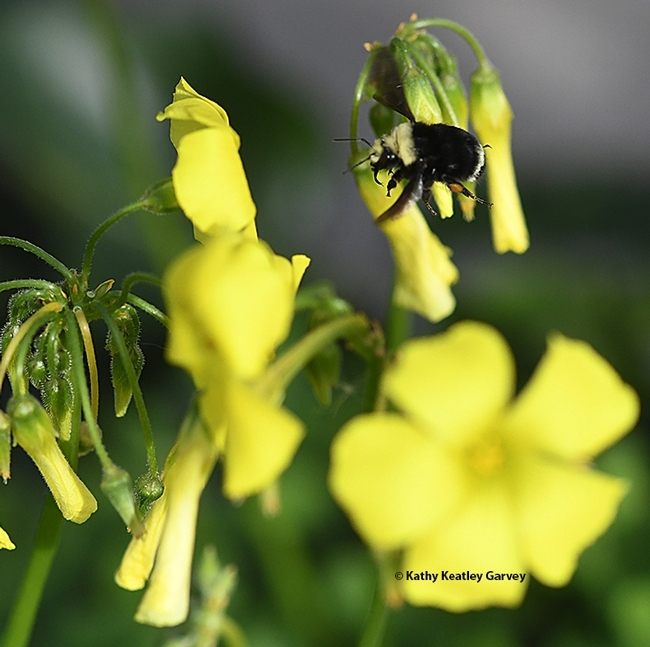
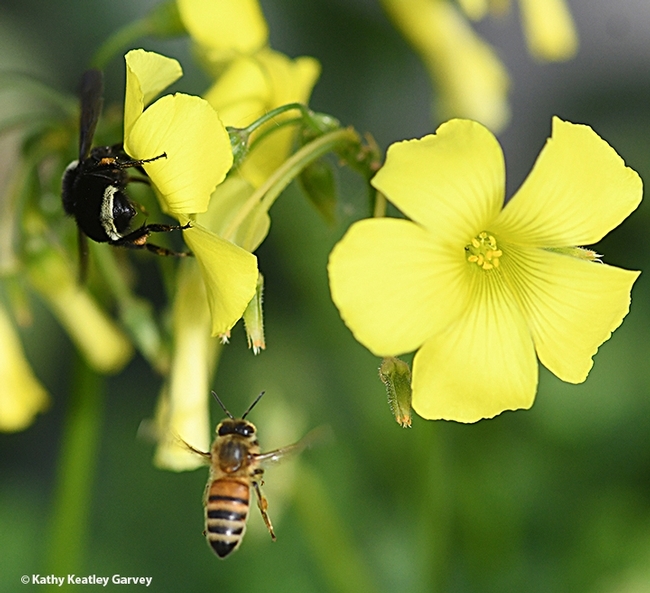
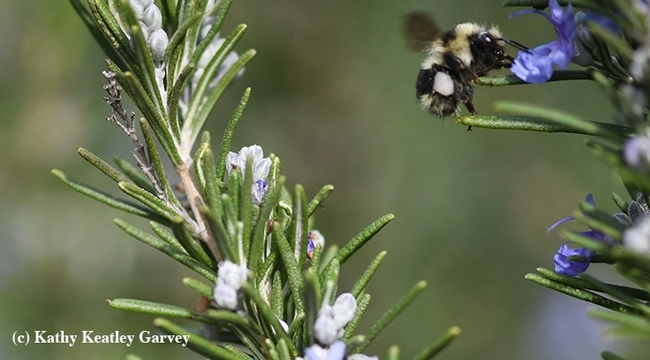
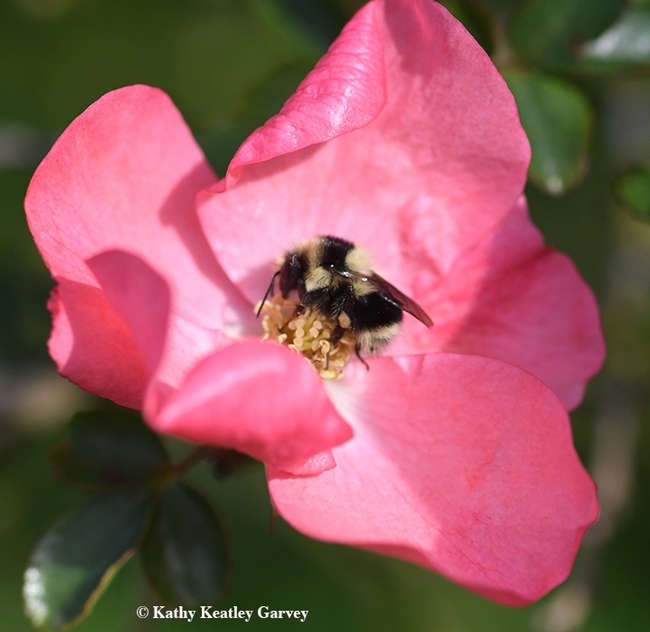
- Author: Kathy Keatley Garvey
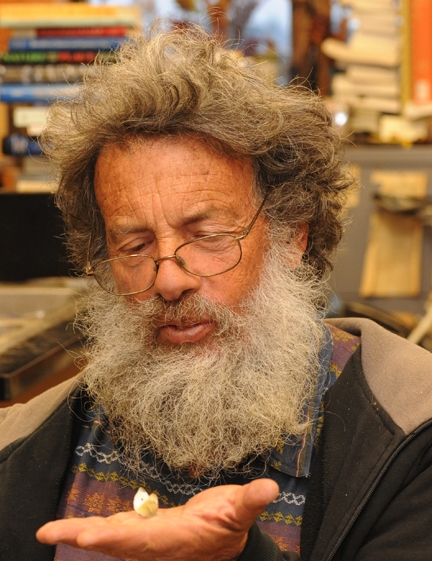
If you're out and about on Jan. 1, start looking for that cabbage white butterfly. But you're going to have to beat the sponsor, noted butterfly expert Art Shapiro, UC Davis distinguished professor of evolution and ecology.
Shapiro is offering a pitcher of beer (or its equivalent) for the first cabbage white butterfly (Pieris rapae) collected in 2017 in the three-county area of Sacramento, Yolo and Solano.
The 2016 winner was UC Davis ecology graduate student Jacob Montgomery who caught a female cabbage white butterfly on Jan. 16 on his lavender plant just outside his front door in west Davis, Yolo County.
“It was cold and rainy and the butterfly's wings looked bent like it had just hatched,” recalled Montgomery, whose grad student studies involve phytoplankton and zooplankton dynamics in the Delta. “It was not difficult to catch. I picked it up by hand…I had been aware of the contest but not actively searching for the butterflies. It was completely opportunistic.”
The 2016 prize winner probably eclosed or hatched around 7:30 that morning, said Shapiro, who has earlier predicted that the first butterfly of 2016 would be collected in mid-January.
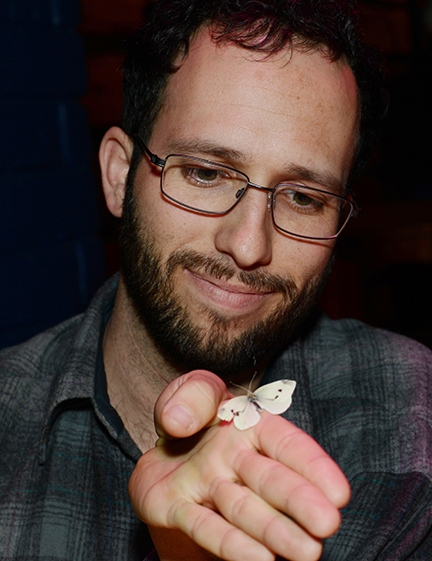
The butterfly is emerging earlier and earlier as the regional climate has warmed, said Shapiro, who does long-term studies of butterfly life cycles and climate. "Such studies are especially important to help us understand biological responses to climate change. The cabbage white is now emerging a week or so earlier on average than it did 30 years ago here."
The professor, a fellow of the American Association for the Advancement of Science, the Royal Entomological Society and the California Academy of Sciences, said the cabbage white butterfly inhabits vacant lots, fields and gardens where its host plants, weedy mustards, grow.
What does it look like? It's a white butterfly with black dots on the upperside (which may be faint or not visible in the early season). It inhabits vacant lots, fields and gardens where its host plants, weedy mustards, grow.
The male is white. The female is often slightly buffy; the "underside of the hindwing and apex of the forewing may be distinctly yellow and normally have a gray cast,” Shapiro said. “The black dots and apical spot on the upperside tend to be faint or even to disappear really early in the season.”

- It must be an adult (no caterpillars or pupae) and be captured outdoors.
- It must be brought in alive to the department office, 2320 Storer Hall, UC Davis, during work hours, 8 a.m. to 5 p.m., Monday through Friday, with the full data (exact time, date and location of the capture) and your name, address, phone number and/or e-mail. The receptionist will certify that it is alive and refrigerate it. (If you collect it on a weekend or holiday, keep it in a refrigerator; do not freeze. A few days in the fridge will not harm it.)
- Shapiro is the sole judge.
Shapiro, who is in the field more than 200 days of the year, monitoring butterflies of central California, knows where to find the cabbage whites and usually returns to his office with the first cabbage white of the year. He has been defeated only four times since 1972. Three winners were his own graduate students: Adam Porter defeated him in 1983; and Sherri Graves and Rick VanBuskirk each won in the late 1990s.
Shapiro has collected many of his winners in mustard patches near railroad tracks in West Sacramento, Yolo County. Over the last seven years, five of the winners came from West Sacramento; one in Davis, Yolo County; and one in Suisun, Solano County.
- 2016: Jan. 16: Jacob Montgomery collected the winner in west Davis
- 2015: Jan. 26: Art Shapiro collected the winner in West Sacramento
- 2014: Jan. 14: Shapiro collected the winner in West Sacramento
- 2013: Jan. 21: Shapiro collected the winner in West Sacramento
- 2012: Jan. 8: Shapiro collected the winner in West Sacramento
- 2011: Jan. 31: Shapiro collected the winner in Suisun, Solano County
- 2010: Jan. 27: Shapiro collected the winner in West Sacramento
Coincidentally, Shapiro caught the 2013 and 2009 winners on President Obama's Inauguration Day. After catching the 2013 winner, he quipped: "The constitution mandates the swearing-in for Jan. 20, though it does not require Pieris rapae to emerge on that date! Thank you, Mr. President.”
Shapiro maintains a website on butterflies at http://butterfly.ucdavis.edu/, where he records the population trends he monitors in Central California. He and artist Tim Manolis co-authored A Field Guide to Butterflies of the San Francisco Bay and Sacramento Valley Regions, published in 2007 by the University of California Press.

- Author: Kathy Keatley Garvey
You can tell it's summer along Yolo County roads by the acres and acres of sunflower fields.
Looking like real-life Van Gogh paintings (Van Gogh painted them in vases, Mother Nature paints them in rows), the sunflower fields are nothing short of spectacular. With tousled heads rising toward the sun and golden locks nodding in the breeze, they stand their ground.
Sunflowers (Helianthus Annuus), native to North America, are one of our most recognizable flowers. They're a good food source, a designer's dream, and dugout tradition.
Earlier this year we fielded a call from a young man from southern California who wanted to know when the sunflowers would bloom in Yolo County. He wanted to propose to his girlfriend in a sunflower field.
This is one agricultural crop that does not go unnoticed. Not by people, not by animals, not by birds, and especially not by honey bees and sunflower bees.





